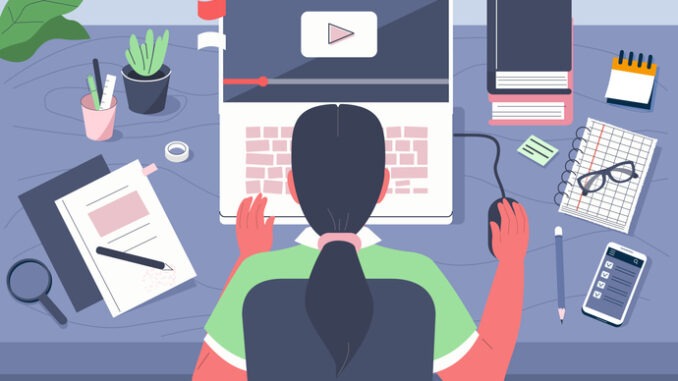
Thanks to the pandemic, it’s now very possible to provide remote education for children who are absent from school – but this is not without its difficulties, and requires careful thought and planning. Here is some food for thought…
CREDIT: This is an edited version of an article that originally appeared on gov.uk
When a pupil is absent schools should always try to overcome any barriers to attendance and support them to return to school. These barriers should be regularly reviewed with the pupil, parents or carers and, if appropriate, a relevant medical professional.
Remote education should not be viewed as an alternative to attendance in school,
and providing remote education during a pupil’s absence does not reduce the importance
of ending that absence as soon as possible. In the circumstance that a school does decide to use remote education for an absent pupil, the following should be considered:
- There should be a mutual agreement about the remote education between the school, parents or carers and, if appropriate, a relevant medical professional. If the pupil has an education, health and care plan or has a social worker, the local authority should also be involved in the decision. Depending on the circumstances, the student can also be included in this agreement.
- Where remote education is being used to reintegrate the student back into school, a formal arrangement should be put in place to regularly review the efficiency of the plan. Schools should also identify what other support and flexibilities can be put in place to help ease the pupil back to school at the earliest opportunity.
- Schools should set a time limit for the period of remote education. As this time limit is reached the situation should be reviewed with the aim that the pupil returns to in-person education with the required support in place to meet their needs.
Schools are likely to have remote education plans in place from times when attendance in school has not been possible in the past. If a school chooses to use existing remote education plans, these should be kept up-to-date so that they remain relevant to the school’s current context. A good remote education plan should be kept under review and should consider any additional challenges that providing remote education may pose to both staff and families.
Delivering remote learning
Work provided during periods of remote education should aim to cover an appropriate range of subjects in order to enable pupils to keep on track with their education. Where pupils have access to devices, remote education might include recorded or live direct teaching time, as well as time for pupils to complete tasks, reading and assignments independently depending on their stage of development. Schools can deliver inline video lessons, or high-quality lessons developed by external providers.
For schools that require further guidance to develop their remote education provision, they should consider the following:
- Having resources ready for pupils to access as soon as possible.
- Providing remote education that is equivalent in length to the core teaching time pupils would receive in school, where possible. Schools should be mindful of the individual needs and circumstances of each pupil and their families including, but not limited to:
- a consideration of age, stage of development, and independent study skills;
- any SEND or other additional needs the pupils might have;
- the pupils’ home environment, which includes having a suitable place and
- opportunity to study;
- screen time, making reasonable allowances for adequate breaks for pupils and staff during digital remote education;
- any significant demands on parents’ or carers’ help or support.
- Working to overcome barriers to digital access, where possible, for pupils by, for example:
- auditing access to devices and connectivity across the school as part of wider emergency planning;
- distributing school-owned devices accompanied by a user agreement or contract if and where necessary and possible;
- supporting families to find appropriate internet connectivity solutions where necessary and possible.
- Planning opportunities for regular feedback and interaction with teachers and peers during the school day.
- Identifying a senior leader with responsibility for the quality and delivery of remote education. Responsibilities may include consulting with staff and relevant leaders within the school or trust to develop any remote education plans, ensuring they are relevant and up-to-date.
- Having an understanding that children can be at risk of harm inside and outside of the school, inside and outside of home and online. It is vital to have systems in place for checking, daily, whether pupils are safe at home and really engaging with their remote education provision.


Be the first to comment